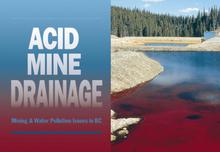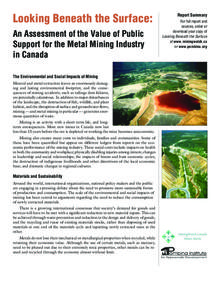Boreal Forest’s Wildlife and Communities Threatened by Impacts from Exploration, Mining – Revised 'Boreal Below' Report
Joint news release with Northwatch: A major new report highlights serious impacts on the Canadian boreal forest from all phases of mining activity, from exploration to closure. Two respected mining industry watchdogs – Northwatch and MiningWatch Canada – say they published The Boreal Below (an all-new and expanded version of a widely circulated 2001 report) in response to growing demand from communities across Canada for information and analysis to help understand the impacts of mining on their lives and livelihoods. It provides a carefully-documented analysis of the social, environmental, and cultural impacts of mining from prospecting to mine closure, as well as an overview of the current situation by province and territory.




















